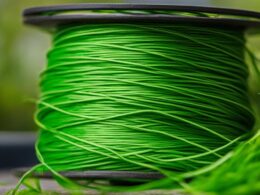Creeping Jenny, also known as Lysimachia nummularia, is a rapid-growing ground cover plant that can create a dense mat of foliage and bright yellow flowers. While Creeping Jenny does not directly release chemicals to harm other plants (allelopathy), its rapid growth and dense cover can outcompete other plants for essential resources like light, space, and nutrients. This competition can hinder the growth of slower-growing or delicate plants and may even lead to their demise if not managed properly. It is important to understand how Creeping Jenny grows and to take steps to keep its growth in check without harming other plants in your garden.
The Impact of Creeping Jenny on Other Plants
Creeping Jenny, also known as Lysimachia nummularia, can have a significant impact on other plants in your garden if left unchecked. Its fast growth and ability to spread quickly can result in overshadowing and intense competition for resources. While Creeping Jenny does not directly kill other plants, it can deprive them of essential nutrients and sunlight, ultimately hindering their growth.
When Creeping Jenny spreads across the ground, it forms a dense mat of foliage that can block sunlight from reaching other plants. As a result, these plants may struggle to perform photosynthesis and produce enough energy to thrive. Furthermore, Creeping Jenny’s rapid growth enables it to outcompete surrounding plants for vital resources such as water and nutrients, placing additional stress on them.
To protect the health and diversity of your garden, it is crucial to manage the growth of Creeping Jenny. Regular monitoring and timely intervention are necessary to prevent it from overpowering other plants. By establishing proper boundaries and employing effective control methods, you can ensure that Creeping Jenny remains confined to its intended areas, allowing other plants to flourish.
Remember: While Creeping Jenny can be a beautiful addition to your garden, it requires careful stewardship to prevent any adverse effects on the surrounding flora. By taking proactive steps to manage its growth, you can create a balanced and thriving garden environment.
Methods for Controlling Creeping Jenny
Controlling the growth of Creeping Jenny is essential to prevent it from overpowering and damaging other plants. Left unchecked, Creeping Jenny can spread rapidly and outcompete surrounding flora, leading to a decline in their health and vigor.
Here are some effective methods for managing Creeping Jenny and protecting your garden:
1. Regular Monitoring
Keep a close eye on the growth of Creeping Jenny in your garden. Regularly inspect your plants and identify any signs of overtaking or damage caused by Creeping Jenny. Early intervention is key to prevent further spread and establish control.
2. Strategic Pruning
Trim back Creeping Jenny to prevent it from crowding out other plants. Focus on removing excessive growth and maintaining a manageable size. Pruning should be done carefully, avoiding damage to surrounding flora.
3. Barrier Installation
Create physical barriers, such as edging or metal liners, to contain the spread of Creeping Jenny. This prevents its lateral growth and restricts its expansion into neighboring areas. Make sure the barrier extends below ground level to prevent underground runners from spreading.
4. Companion Planting
Strategically plant other vigorous, competitive plants alongside Creeping Jenny to limit its growth. Choose plants that can tolerate or outcompete Creeping Jenny, creating a more balanced ecosystem in your garden.
5. Mulching
Apply a layer of mulch around plants susceptible to Creeping Jenny invasion. Mulching helps to suppress its growth by restricting access to light and nutrients. Organic mulches, such as wood chips or straw, work effectively to deter Creeping Jenny.
By implementing these controlling methods, you can prevent damage caused by Creeping Jenny and ensure the well-being of your surrounding flora. Remember to regularly check and adjust your control measures to keep Creeping Jenny in check and maintain a harmonious garden environment.
Conclusion
In conclusion, Creeping Jenny can be a stunning addition to any garden, providing vibrant foliage and bright yellow flowers. However, its rapid growth can pose a threat to other plants if left unattended. To ensure the health and diversity of your garden, it is crucial to manage the growth of Creeping Jenny effectively.
By understanding the growth habits of Creeping Jenny and implementing appropriate control methods, you can enjoy the benefits of this ground cover plant while preventing it from overpowering other plants. Regular monitoring is essential to identify and address any signs of overgrowth. Pruning Creeping Jenny’s stems and foliage can help keep it in check.
In addition, companion planting can play a significant role in managing the growth of Creeping Jenny. By strategically selecting companion plants that can coexist well with Creeping Jenny, you can create a balanced ecosystem in your garden. The companion plants can help limit the spread of Creeping Jenny and provide healthy competition for resources.
Overall, managing the growth of Creeping Jenny requires a proactive approach. By employing these control methods, you can maintain a harmonious garden, where Creeping Jenny enhances the beauty without causing harm to the surrounding flora. Remember, the key is to find the right balance and take the necessary measures to manage its growth effectively.
Can Creeping Jenny Thrive in Full Sun Without Harming Other Plants?
Yes, Creeping Jenny can thrive in full sun without harming other plants, including ferns. It’s a versatile ground cover that can adapt to various light conditions, making it an excellent choice for mixed borders or rock gardens. Just make sure to keep it well-watered in hot, sunny locations.










